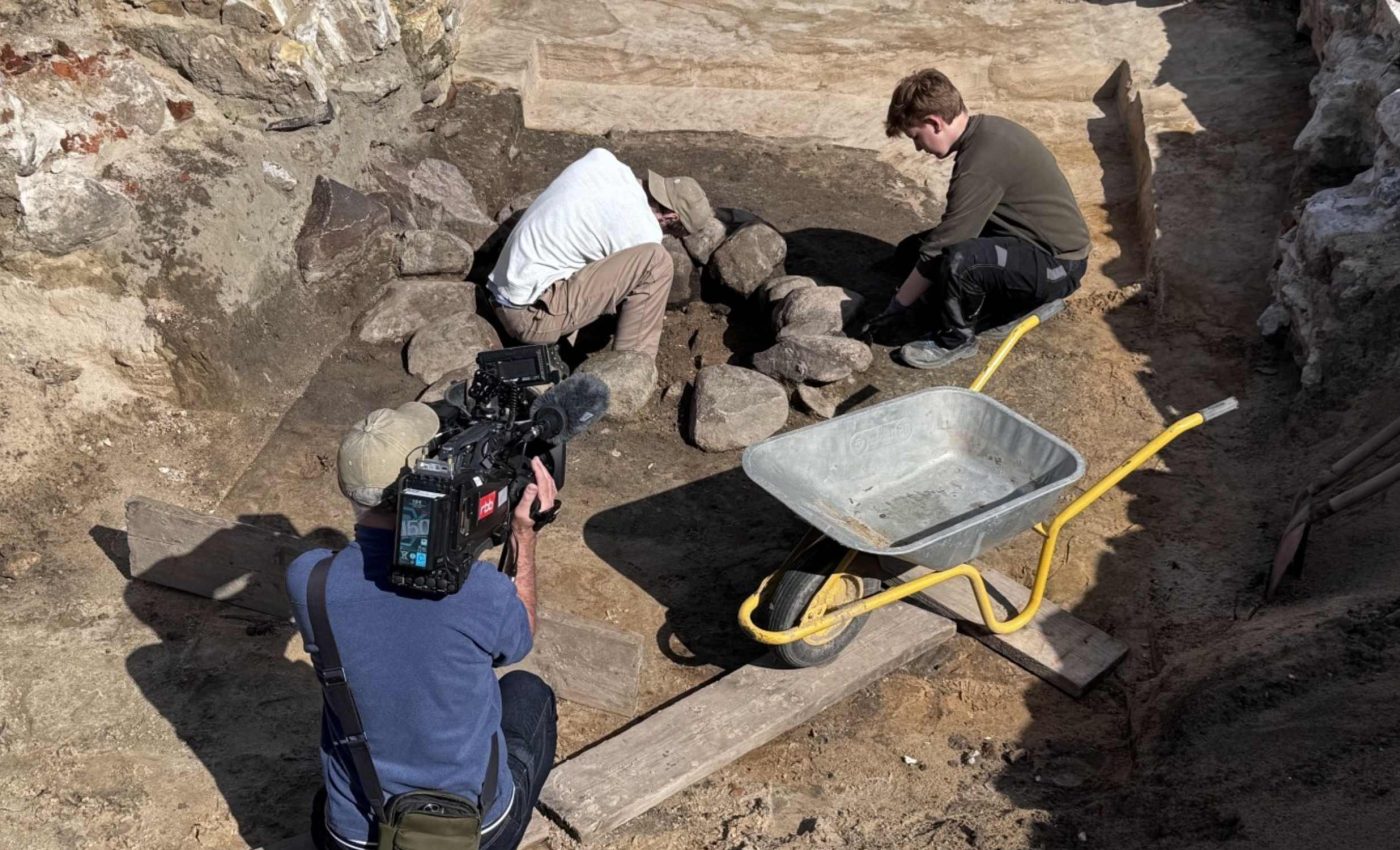
Medieval treasure was found under the center of Berlin, but no one knows who buried it
Archaeologists in Berlin have uncovered a tiny hoard of late-medieval silver coins at Molkenmarkt in the city center. The find has entered public view as part of a large urban dig spanning about 5.4 acres.
A team from the Berlin State Office for Monument Protection recovered five silver coins and a half coin from a medieval pit. The discovery anchors a monetary story from the 1200s in the heart of today’s Berlin.
The work is led by Dr. Christoph Rauhut of the Berlin State Office for Monument Protection (GERcIT). His team is documenting layers that include streets, cellars, wells, and work yards.
Molkenmarkt preserves traces from about 800 years of city history. That long view gives context to a handful of coins and to the people who used them.
Berlin coins spoke of power
The hoard holds five whole coins and one half – all denarii, small medieval silver coins used for everyday payments.
The set on view is called PETRI Berlin and totals five and a half pieces, or five denarii plus a cut half, with each piece measuring about 0.59 inches (1.5 centimeters) across.
Designs on Brandenburg coins of this era often show a margrave – a frontier governor who ruled a border province – on one side and an eagle on the other. That iconography signaled who held the right to mint and to tax.
The coins date to the late 13th century, when local rulers consolidated power and trade intensified. Silver pennies moved through markets that were growing busier week by week.
Artifacts of human routine
Besides coins, excavators have recorded a net sinker from the 1300s, a bone flute, a sock and leather shoes from about 1450, a silk ribbon from the same era, marbles from the 1600s, and flints from flintlock weapons.
The list sketches work, music, clothing, play, and defense across four centuries.
Organic items survived where the ground remained wet and airless. Sealed street surfaces laid in the 1900s helped keep older layers intact below.
Massive excavation reveals the past
Archaeologists have documented roughly 700,000 finds as they peel back about 13 feet (4 meters) of deposits across roughly 5.4 acres (2.2 hectares). Trenches and pits cut through backyards, cellars, and wells in a methodical grid.
One dramatic walkway runs about 164 feet (50 meters) long and up to 23 feet (7 meters) wide. The timber road dates to around 1230.
Roads like this carried carts over wet ground toward churches and mills. Their size and craftsmanship show the engineering skill it took to hold a young town together.
Berlin’s past on open display
PETRI Berlin opened in June 2025 to connect labs, workshops, and exhibitions under one roof. The small hoard appears there alongside tools, tiles, and tableware.
Visitors can watch conservators clean soot from glass and stabilize leather. That open view lets the city follow the work step by step.
Archaeologists say the Molkenmarkt excavation does more than reveal medieval life, it reshapes how Berlin plans its future.
City designers are using the findings to inform new building codes that preserve underground layers while allowing modern infrastructure to rise above.
The project also serves as a public archive of memory. By displaying objects like the coins, flute, and shoes alongside urban maps, the PETRI Berlin exhibit shows how ordinary life once unfolded where government buildings now stand. It also reminds residents that every street rests on centuries of human activity.
Berlin coins as clues to history
A cache this small may represent pocket money stashed in a hurry or a tiny store of savings that never got retrieved. Either way, it is a data point that fixes coin use in the 1200s at the site of Berlin’s earliest market.
Design choices and metal content help track minting practice and local authority. When paired with shoes, toys, and tools, the hoard rounds out a picture of life that stretches from medieval lanes to modern streets.
Lessons from Berlin coin discovery
A standing ruler flanked by towers or walls sends a clear visual message. The eagle, long a shield symbol in the region, speaks to territory and allegiance.
These are not decorative touches but signals of authority – proof that a coin was valid in local markets and backed by the state itself.
Now, as teams finish excavation and cataloging before final scientific evaluation, their work will test dates, origins, and use patterns across the full set of finds.
Future city blocks will rise around archaeological windows that keep pieces of this history visible.
The small hoard will remain part of that larger story, side by side with the shoe and the flute that once shared its ground.
—–
Like what you read? Subscribe to our newsletter for engaging articles, exclusive content, and the latest updates.
Check us out on EarthSnap, a free app brought to you by Eric Ralls and Earth.com.
—–













